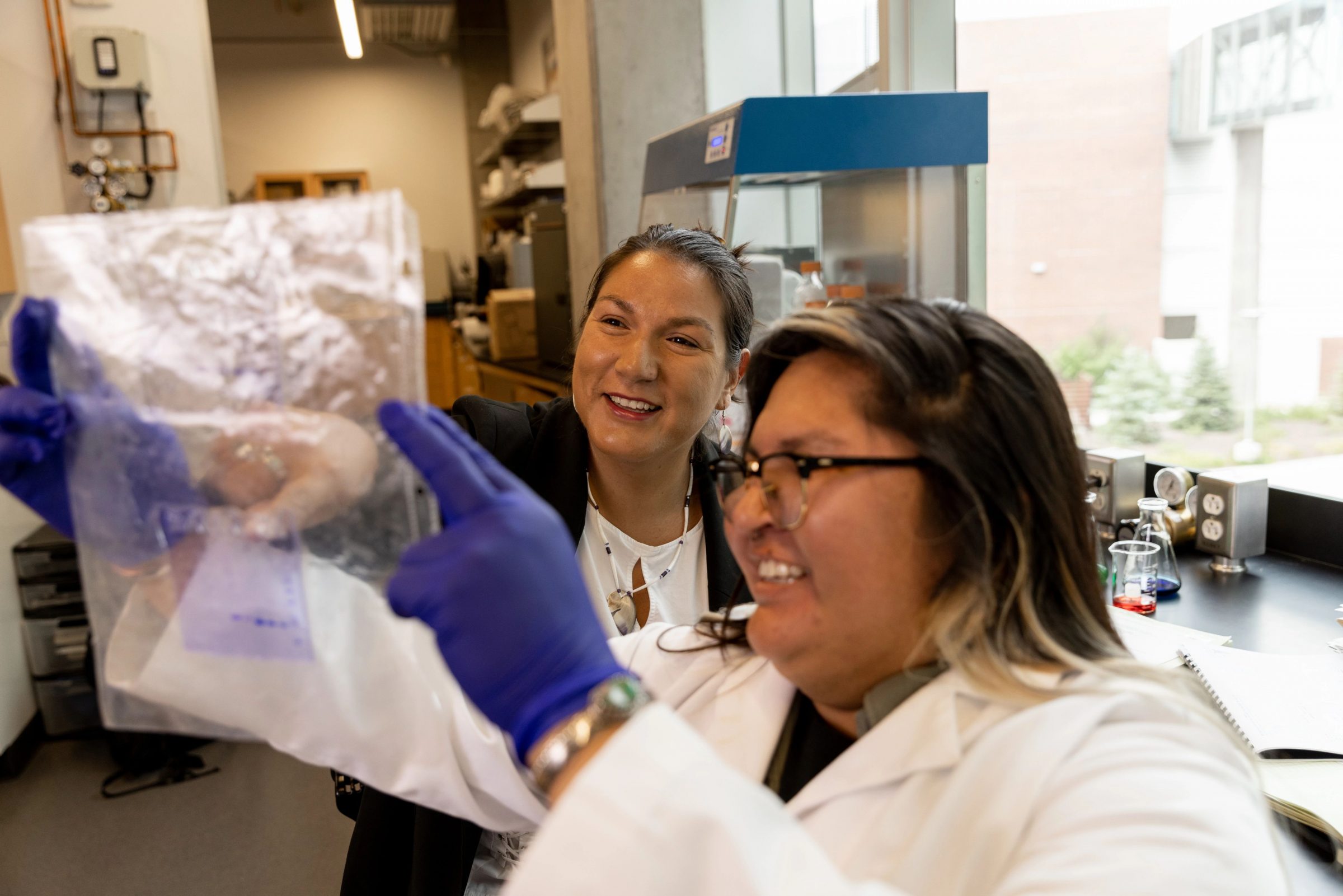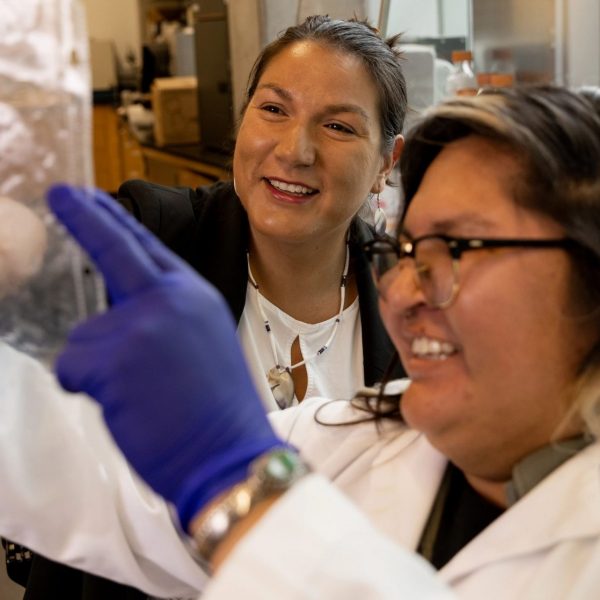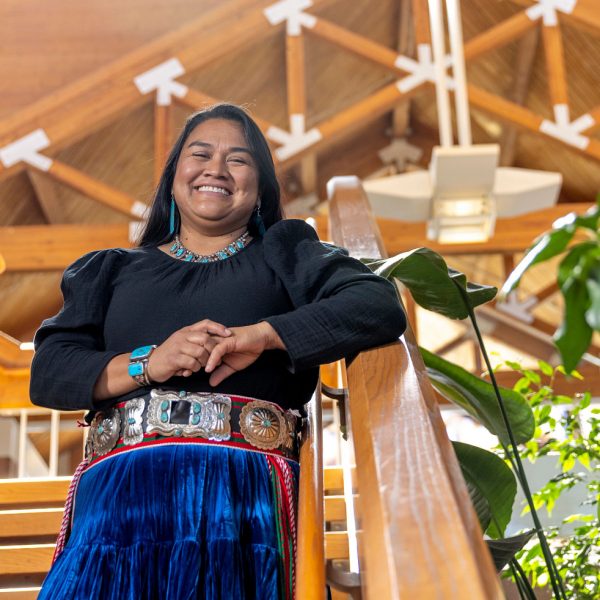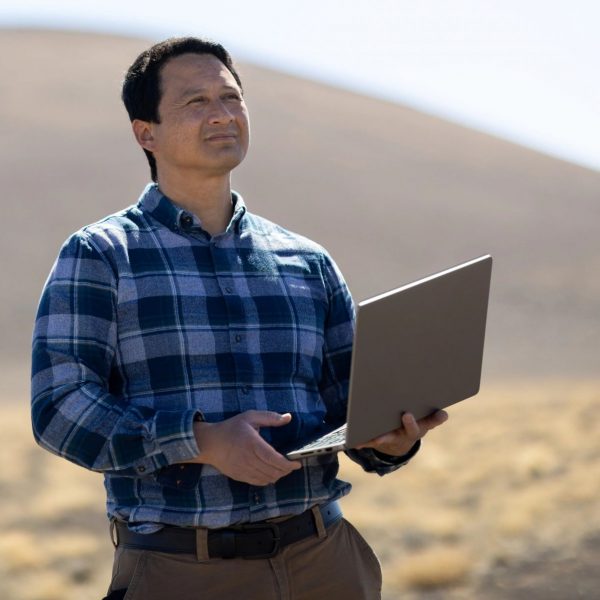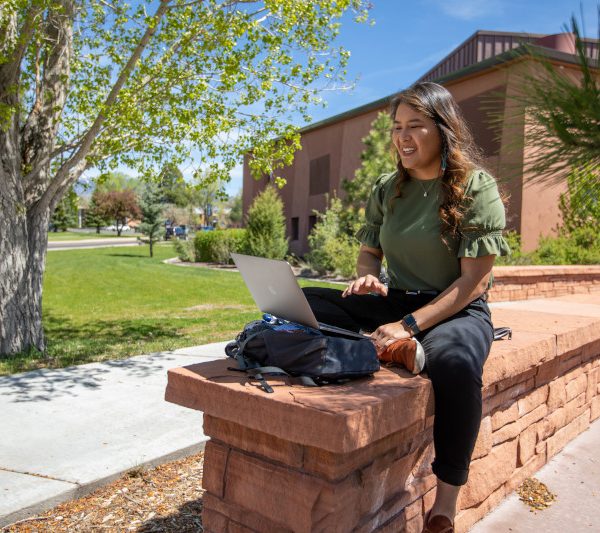Native biochemist Naomi Lee integrates cultural identity with research, paying her success forward with student mentorship in STEM.
As a member of the Seneca Nation of Indians growing up on the rural Cattaraugus Reservation in southwestern New York, Naomi Lee first became interested in science in middle school. That’s when she participated in the Science and Technology Entry Program (STEP) held at a local college, which was sponsored by the reservation. The program offered outdoor environmental learning that summer—and although Lee had spent a lot of time outdoors as a child, she’d never thought about it from a scientific perspective.
“It was the first time I learned about collecting data. That’s what really sparked my curiosity in science,” she says.
Growing up, she didn’t have any role models for being a scientist, but she always did well in biology, chemistry, and math. When it came time to apply for college, Lee picked Biochemistry as her major because she liked both fields. She earned her BS in Biochemistry at the Rochester Institute of Technology (RIT), then decided to pursue an MS/PhD in Chemistry at the University of Rochester.
In college, she started to meet mentors—both scientists and other professionals—who helped her on her career path.
I want to be the first Native researcher who designs a vaccine specifically for Native communities.
“When I was finishing up my undergraduate degree at RIT, Dr. Christina Goudreau Collison was my teacher for advanced organic chemistry. A younger faculty member, she was really excited about chemistry. She was my first female mentor who showed interest in me and helped me figure out the next steps in my career. She encouraged me to apply to the University of Rochester for my graduate degree.”
Lee had to detour when both her parents fell ill, taking a two-year leave of absence to care for them after finishing her master’s qualifications. While on leave, she joined the Army National Guard, then returned to the University of Rochester to complete her program. Lee still finds time to serve her country—she is currently a Major in the US Army Reserve, assigned to the 322nd Civil Affairs Brigade.
After graduating with a PhD in Chemistry, Lee completed a postdoctoral fellowship at the National Institutes of Health (NIH) and another at the University of New Mexico before coming to NAU in 2019. Recruited by several prestigious institutions, Lee chose NAU because of its diversity and the opportunity she saw to have the greatest impact on Native American students.
Cultivating Indigenous love for STEM
Today, as an assistant professor at NAU, Lee has first-hand knowledge about the importance of providing opportunities for Native youth to engage in STEM (science, technology, engineering, and math) fields, and she is committed to helping Native students learn about science.
One of her projects is teaching chemistry to high school students during the summer through NAU’s Cultural and Academic Research Experience (CARE). The CARE program is supported by NIH, and its goal is to increase the number of Native American and underrepresented students in STEM, including medical fields, by engaging high school students in culturally relevant training in chemistry, biology, and healthcare.
I really enjoy working with high school students and undergrads, mentoring them, and getting them on a career path that they didn’t even know might exist.
Offered to students both as an 8-week virtual program and a 5-week on-campus program, CARE engages students in academic research. They receive coaching, professional development training, and a stipend. The program includes four weeks of chemistry education based on REActivities, materials created by Lee along with her former mentor Dr. Collison at RIT, Dr. Joslynn Lee at Fort Lewis College, and Jasmyn Genchev, one of Lee’s undergraduate students at NAU. The materials incorporate traditional knowledge such as the medicinal and culinary use of native plants. Students conduct hands-on experiments such as “Stoichiometry: Crepes and Pancakes,” “Redox and Acid-based Reactions in Apple Browning,” and “Separations and Biochemistry: Ricotta Cheese.” The program also features one week of training in scientific computing using the QIIME 2 platform.
“I really enjoy working with high school students and undergrads, mentoring them, and getting them on a career path that they didn’t even know might exist,” Lee says.

Improving health for Native communities
Trained in chemistry, biochemistry, virology, molecular biology, ethics, epidemiology, and public health, Lee focuses much of her multidisciplinary research on health outcomes for people in Native communities. She studies viruses like human papillomavirus (HPV) and human immunodeficiency virus (HIV), cancers including cervical and pancreatic cancer, and cardiovascular disease, as well as opioid and methamphetamine addictions. In the lab, she works to find vaccines for diseases and addictions alike using peptide and protein-based vaccines as platforms. Many of her projects focus on developing vaccines against sexually transmitted infections (STIs) and identifying risk factors and health disparities within Tribal communities. In the early stages of the coronavirus pandemic, Lee collaborated on a project to increase Native Nation participation in COVID-19 vaccine trials.
“I want to be the first Native researcher who designs a vaccine specifically for Native communities,” Lee says. “While my work may be beneficial to the general population, I strive to look at research questions through an Indigenous lens. I want to use my skills to make healthier, happier communities.”
Committing to underrepresented minority students
At NAU, Lee teaches biochemistry at the undergraduate level, including CHM 460LC: Biochemistry Lab; CHM 461: Biochemistry I; and CHM 462C: Biochemistry II.
“My teaching philosophy is to provide a prosperous learning environment for all students, with a particular interest in decreasing the attrition rate for underrepresented minorities in STEM fields,” Lee says. “I accomplish this by endorsing a flipped classroom and an active learning environment where students are continuously engaged in discussions, activities, and small group workshops. I also utilize modern technology to improve my teaching skills and maximize student learning.”
As a Native student herself, Lee faced discrimination. “When I was accepted at RIT, I told my high school teacher that I was going to study biochemistry. I remember he said, ‘Oh, that’s really hard. I’m not sure if you’re going to make it.’” But she didn’t let that deter her. “That was probably the first time I really remember being discouraged from science, but I knew I was smart enough to be a scientist.”
Lee’s keys to success: pride, resilience, and support systems
She believes it’s very important for women scientists—especially Native women—to be proud of their heritage and not to separate their identities as Native from their identities as scientists. “Native students have to be resilient. They’re going to face discouragement and obstacles. I recommend they build a network of people who will help support them. No one should do everything on their own.”
Still an early-career researcher, Lee has already published multiple times and garnered several major grants for her work. In 2020, Lee was named a 2020 Emerging Scholar by Diverse: Issues in Higher Education for her dedication to helping Native Americans in and out of the lab.
“I once heard someone say, ‘Research is supposed to be culturally neutral,’ but someone’s culture is always influencing it,” Lee says. “As a Native researcher, it is my duty to serve my community and ensure ethical and relevant research is being conducted.”
A student-focused lab
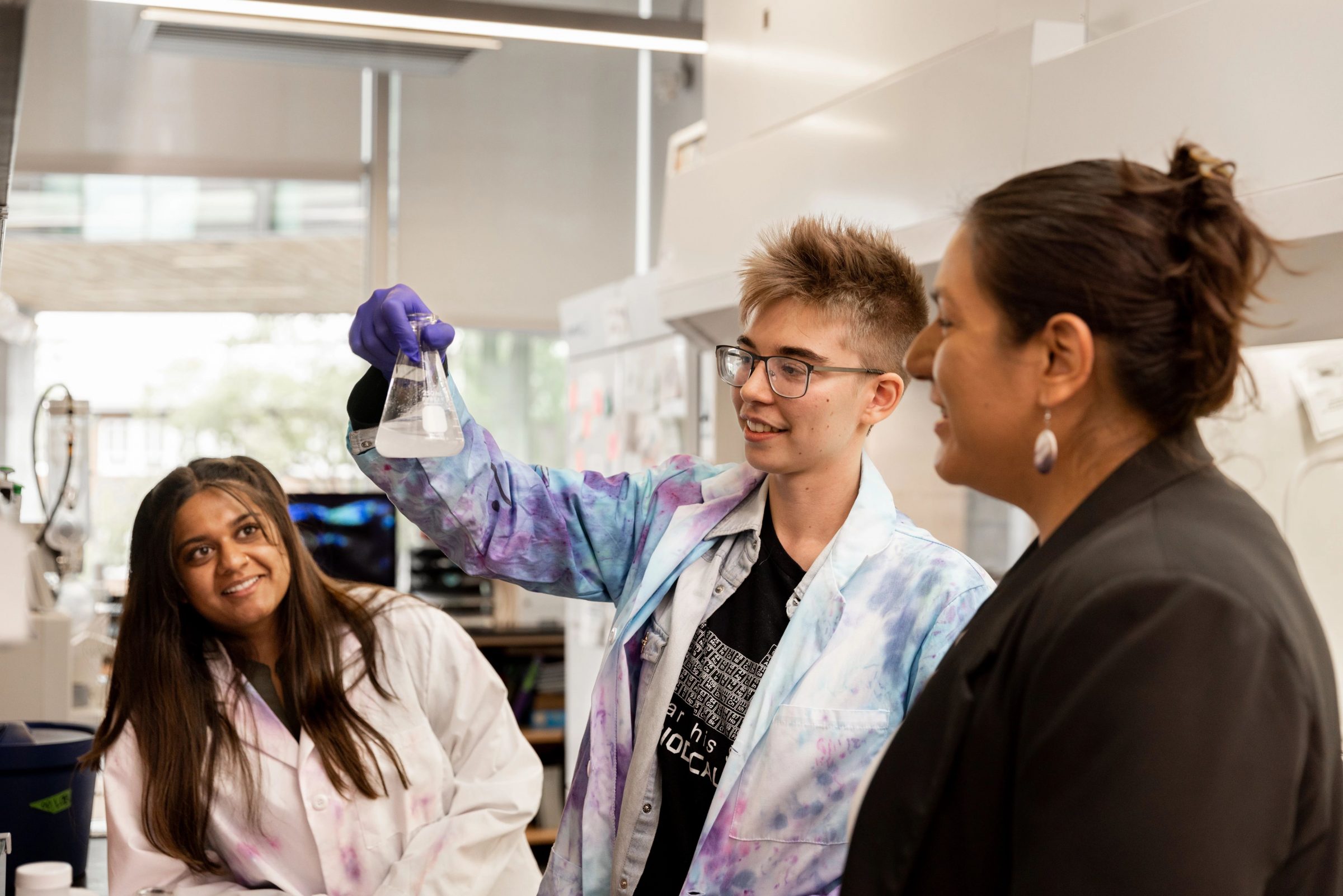
Lee developed the following vision and mission statements for her biochemistry lab, where high school, undergraduate, and graduate students with diverse backgrounds, ethnicities, and genders contribute knowledge from numerous academic disciplines.
Vision
To address Native American health disparities through novel therapeutics and increase historically excluded students in STEM and health sciences.
Mission
To develop peptides and protein therapeutics against chronic and infectious diseases as well as promote higher education for historically excluded students.

